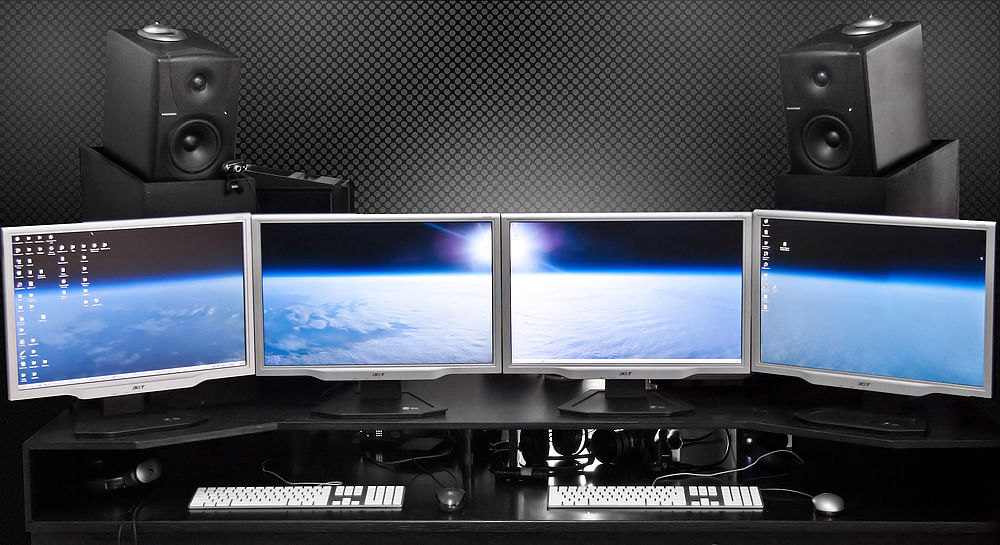
Using ultrasharp displays with a desktop or laptop computer can be great for general viewing or serious work.
With each passing day, computer and television displays are crossing newer boundaries when it comes to display technology and resolution.
The highest resolution currently available is 8K with a resolution of 7680×4320 pixels. The 4K resolution (3840x2160) is taking the world by storm and it is definitely going to take some time before 8K monitors and television sets get popular in offices and homes. 4K displays are expensive and 8K can be even more expensive.
The pixel war going on leaves one to wonder to what extent this will go. The more important question is if the human eye will even be able to spot the difference in a between the two and if an 8K display is much better than a 4K one.
That said, if there is serious work going to be done on the computer, an ultrasharp monitor can be a useful investment. An ultrasharp will have the high-definition screen (1920x1080) but with technologies like the In-Plane Switching (IPS) panel, better contrast and colour reproduction, better viewing angles and such other features. This makes for a better viewing experience. The vertical resolution could go up to 1200 pixels in some monitors, giving some extra space on the screen.
Who could use an ultrasharp monitor? It could be an avid gamer who needs the display to be good, it could be a photographer who wants to edit photographs accurately or a video editor who needs to see subtle detail in a project.
Take a photographer for example. If a photographer were to shoot good pictures and gets down to editing them, he or she would need a good quality screen to see how it has actually been captured on the camera. If a laptop is a high-end one, we can infer that the screen will also be of high quality. But lower-priced laptops will not have very high quality screens. That is where the problem begins.
If a photographer edits and colour corrects on a screen that is not of very high quality, there is a certain quality of colours that is seen. That reproduction may not necessarily be what the camera has captured because the monitor is not of the highest quality. This is a problem particularly when these images are used in print media because what you see on the monitor may not be what ends up in print. If an ultrasharp monitor is used, the photographer is able to see the actual colour info and do a better job.
Ultrasharp monitors will quite often have, apart from the USB and HDMI connectors, DisplayPort and DVI connectors to transfer high-quality information from the desktop/ laptop video output to monitor.
The plus points of ultrasharp monitors are not just high-quality displays and good connectivity features. The monitor stand allows for tilt, rotate and height adjustment as well.
The display size among in ultrasharp monitors can range from 24 to 49 inches.
Another trend that is becoming popular is curved monitors. The screen has a gentle curve, which provides a better all-round viewing experience. The user feels enwrapped and gives a more immersive experience.
Companies that manufacture high-end monitors are Dell, Asus, HP, BenQ, Acer, AOC, LG, Samsung and several others.
With all the features loaded, the cheapest ultrasharp monitor will cost about Rs 25000 and could go up to Rs two lakh for the bigger ones.
In conclusion, if there is a need for high quality work, an ultrasharp monitor is definitely a worthwhile investment.